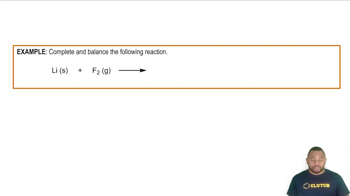Textbook Question
Draw the Lewis structure for NO+ . Is the nitrogen–
oxygen bond in NO+ longer, shorter, or the same length as the
nitrogen–oxygen bond in NO? Explain.
Draw the Lewis structure for NO+ .
1187
views
 Verified step by step guidance
Verified step by step guidance



The ionic compound CaO crystallizes with the same structure as sodium chloride (Figure 8.3). (a) In this structure, how many O2- are in contact with each Ca2+ ion (Hint: Remember the pattern of ions shown in Figure 8.3 repeats over and over again in all three directions.)
Construct a Born–Haber cycle for the formation of the hypothetical compound NaCl2, where the sodium ion has a 2+ charge (the second ionization energy for sodium is given in Table 7.2). (a) How large would the lattice energy need to be for the formation of NaCl2 to be exothermic?